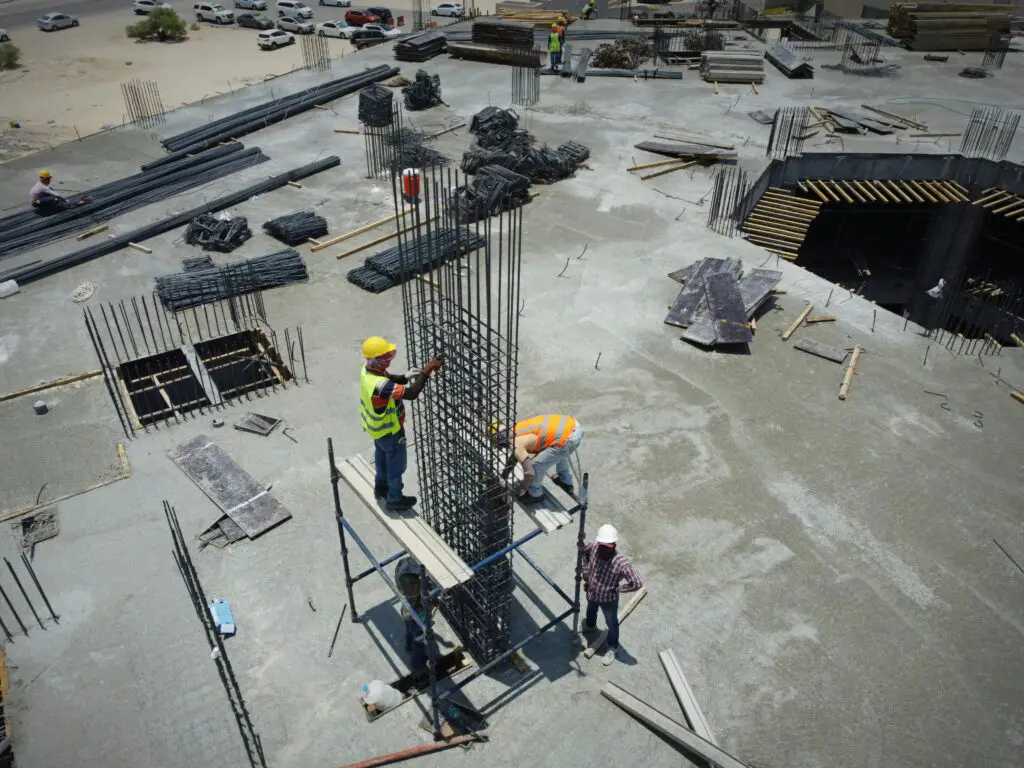Related Posts
Freak accidents are simply an aspect of life we must deal with. Luckily, unusual accidents are rare. Nevertheless, when one does occur, it can be a healthy reminder of just how random life can be. A viral construction accident clip sweeping the internet demonstrates this lesson. Watch below as a man narrowly dodges a runaway saw. After analyzing the clip in detail, we will dive into construction liability concerning the question: “Can you sue for emotional distress?”.
Viral Construction Accident Caught On Camera
The clip shows a newscaster describing how a man nearly got injured by a runaway saw blade. Security camera footage shows the man walking into a convenience store while a group of trucks from a nearby construction site appears in the distance.
The man enters the store, closing the door behind him. Just seconds after the door shuts, we see a humongous saw blade barreling towards the store. Almost like it was straight from an action film, the saw blade strikes near the glass door where the man stood moments before.
From a different angle, we see the man shutting the door from the inside. He appears alarmed as he closes the door and sees the blade barreling towards him. From inside, the force of the blade is so strong that it shakes the door and walls.
So, can the man sue for emotional distress? Who’s liable in freak construction accidents like this one? Let’s get into it!
Construction Liability

As you probably saw in the video, construction sites and their surrounding areas can be dangerous. With moving parts, heavy machinery, and difficult work conditions, construction sites injure thousands of workers and bystanders each year.
To protect workers and the general public, construction liability typically falls upon construction companies. They must often post signage, train workers, and set up protective mechanisms to prevent injuries and accidents. In most construction accident suits, the company retains liability for failing to implement adequate protective measures.
There are some instances in which other parties may be liable for construction site accidents:
- Landowners can be liable if they fail to properly notify the public of ongoing construction. It is generally their responsibility to post signage on their land to inform people of ongoing work and of risks that they may experience near the site of work.
- Engineers and safety professionals can be liable if they fail to ensure machinery and procedures are safe for everyone. If a safety professional involved in the project creates a faulty plan that results in your injury, you can seek litigation against them specifically.
- Equipment manufacturers can be liable if their machinery does not meet standards. Similarly, if defects in equipment used on a project cause a freak accident, the manufacturers can also face liability.
- Individual workers can be liable if their actions lead to their injury. While many actions fall under the supervision of a construction company, workers sometimes cause injuries in ways that the company could not prevent.
If you’ve experienced a construction site injury, you should seek counsel from a legal professional. They can guide you on the best course of legal action.
Can You Sue For Emotional Distress?

It is a common trope in media and film to hear characters suing others for emotional damages or distress, but is this a real possibility? Yes. It is valid and legal to sue for emotional damages if a situation has negatively impacted you. Emotional distress cases don’t need physical damages to be heard by a court.
Emotional distress can manifest in many forms after an incident. Some of the most common examples include anxiety, depression, emphasized fear, and PTSD, among others. You must prove another party was negligent or failed to provide a duty of care to you.
Emotional stress and physical damage are otherwise known as pain and suffering in the legal sphere. The rules regarding how to sue for pain and suffering differ from state to state. Many states require that your emotional stress shows in some physical form, whether that be rashes, lost weight, or other symptoms that accompany mental anguish.
When suing for emotional distress, you must prove that another party intentionally caused distress or caused distress through their negligence. Some have been able to argue that they incurred emotional distress through being a bystander at a traumatic incident.
In recent times, the ability of people to prove they have experienced emotional stress has increased dramatically. On top of traditional doctors’ notes and psychiatric prescription records, people can show digital sleep trackers and pedometer heart rate monitors to display their physical manifestations of emotional distress.
Ugo Lord’s Analysis
In response to the incident, TikTok attorney Ugo Lord has weighed in. Firstly, he updated his audience, stating that no one was physically injured in the event. At the beginning of the video, the man does not see the blade barreling toward him.
Due to his lack of knowledge, he couldn’t sue for emotional distress if the situation ended there. In other words, if you don’t know something is happening, it is unlikely that you will experience physical stress in the form of anxiety or flashbacks.
On the other hand, as the video continues, the man most definitely sees the blade barreling toward him. He tries to close the door faster and steps back to protect himself. It is at this point that the man would have a more solid case concerning emotional damage related to the incident. In the comedic words of Ugo Lord, “If I witness something like that, I would not walk in a parking lot for months!”. If the man experienced long-lasting emotional distress related to the incident, the construction company could easily be held liable.

